Architecting a UVM Testbench
Contents are extracted from the Advanced UVM sessions by Verification Academy.
Architectural design
For each interface
- How does the interface work?
- What information is transferred
- Transaction variants?
- Uni/bidirectional? Pipeline?
For the design:
- What does it do?
- What are the use cases?
- Which test cases are required?
- What type of stimulus scenarios are required?
- What represents correct behavior?
- What kind of functional coverage needed?
Building blocks
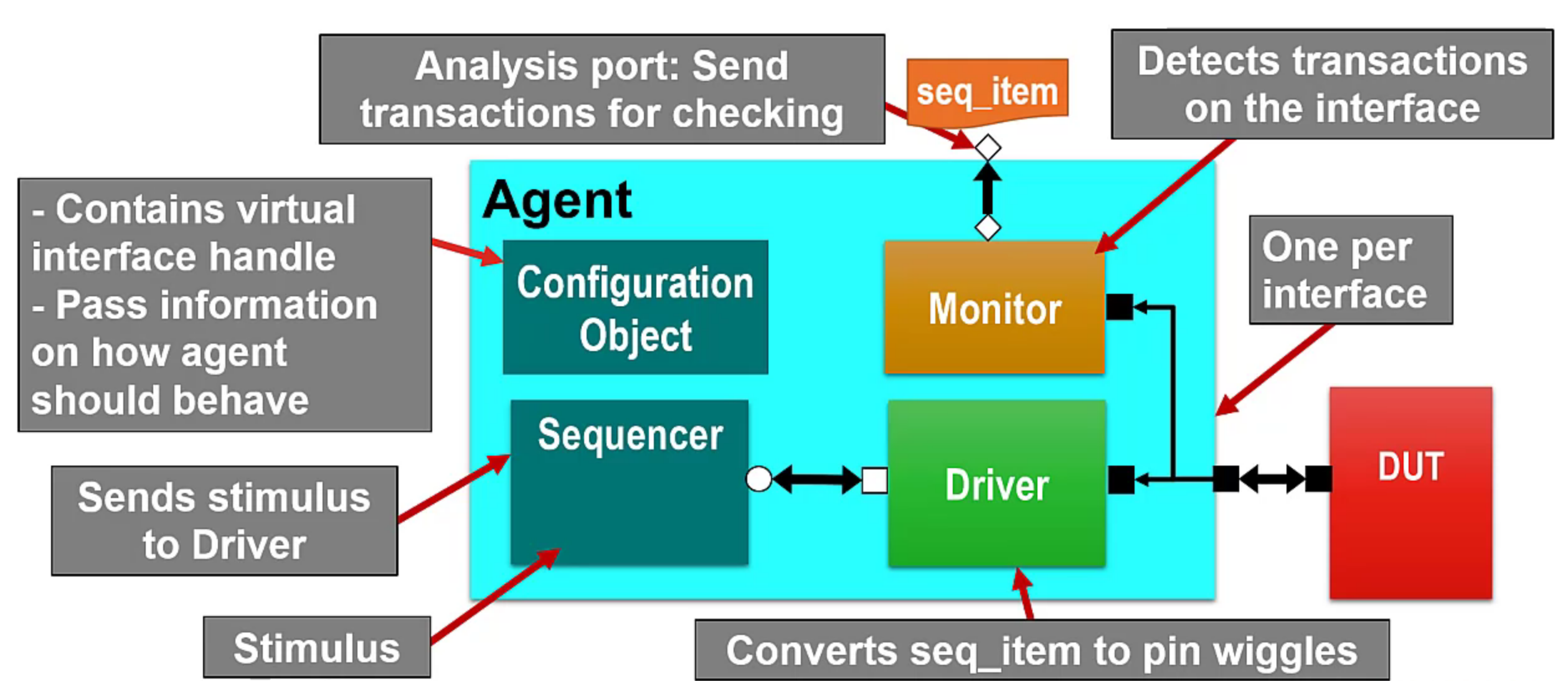
Block-Level Env/Test
It is not recommended to start the sequences on the environment if unsure
Test: Instantiate the environment and create environment configuration object, passing it to the environment
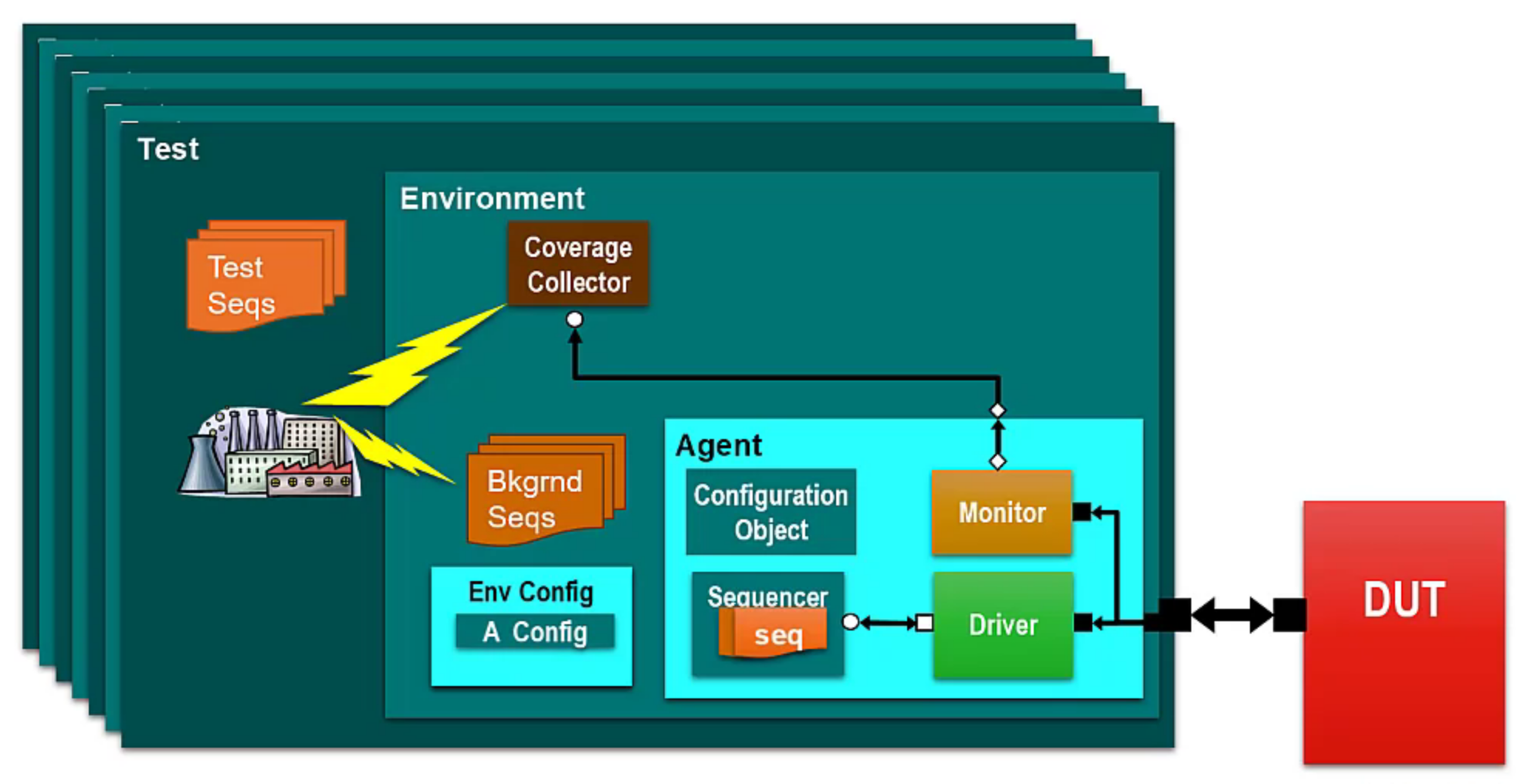
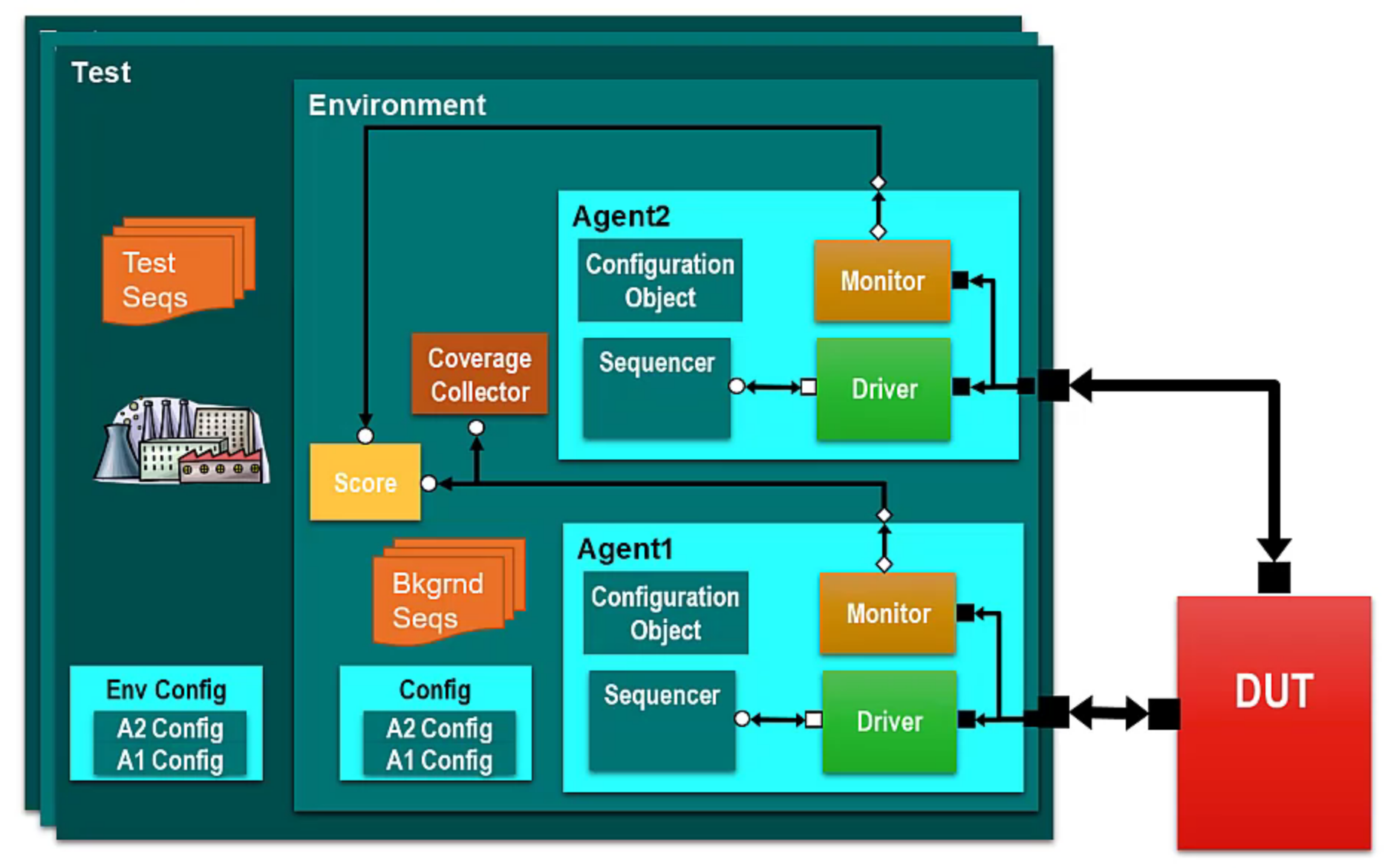
Environments can be instantiated inside another environment
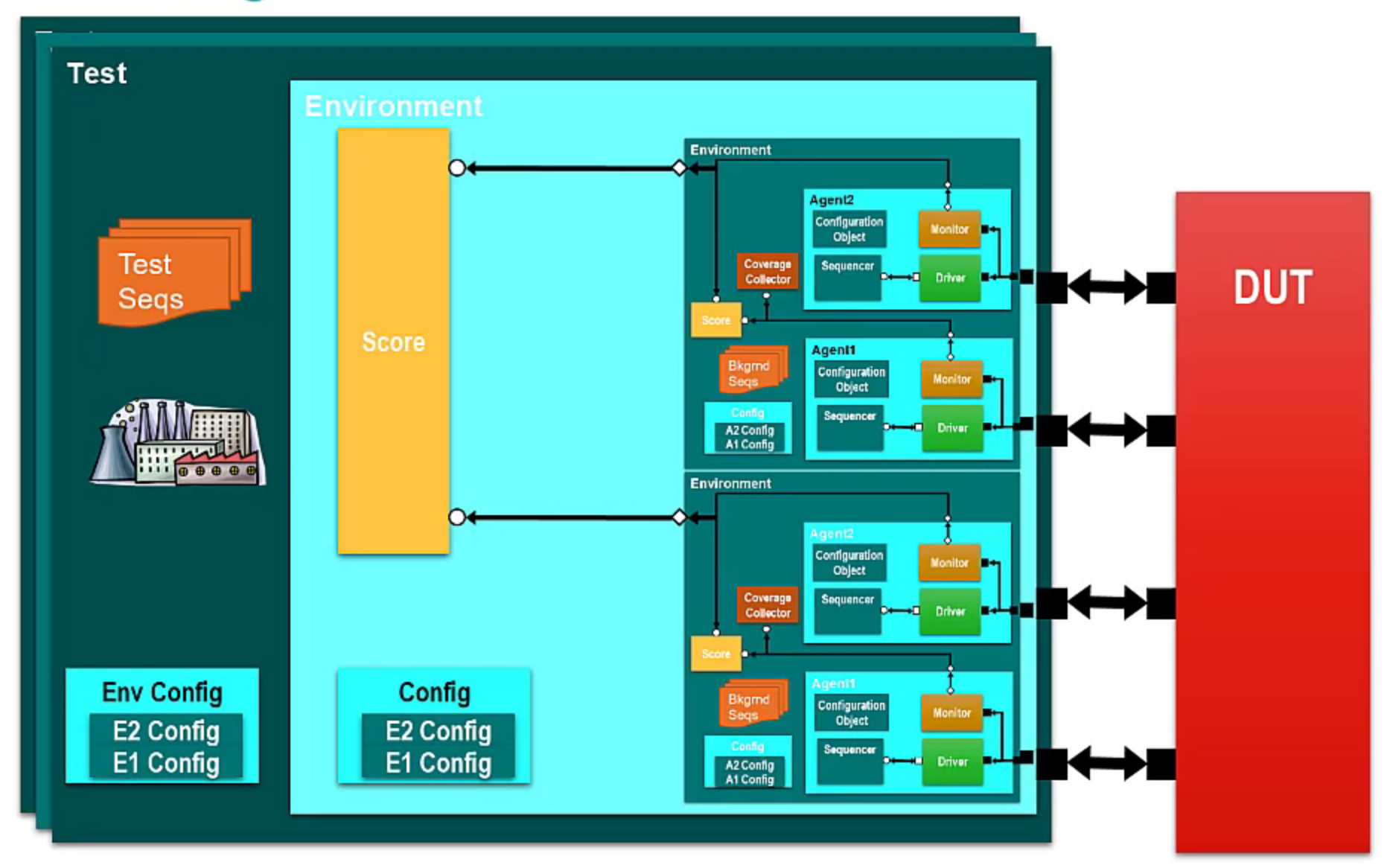
Phasing
UVM execution is controlled by phases
<task/func> phasename_phase (uvm_phase phase);Build phase is called top-down
- Facilitates hierarchical instantiation and configuration
All others phases are called bottom-up
run_phase() are the only task
- All
run_phasemethods execute in parallel
Don’t use alternate run-time phases
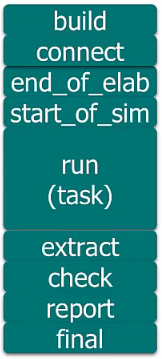
The virtual interface handle can be passed down the agent through the configuration object
Don’t call the
super.phasename_phaseon the component that directly inherit theuvm_basecomponents (uvm_test,uvm_env, etc.)
Summary
Agents are protocol-specific
Environments define the testbench topology
- Which agents and how many
- Other components
Base test instantiates env and handles default configuration
Extend the base test to define additional test
- Tweak configuration and/or factory settings
- Start (virtual) sequence(s)
- Test handles phase objections
Keep to basic phasing